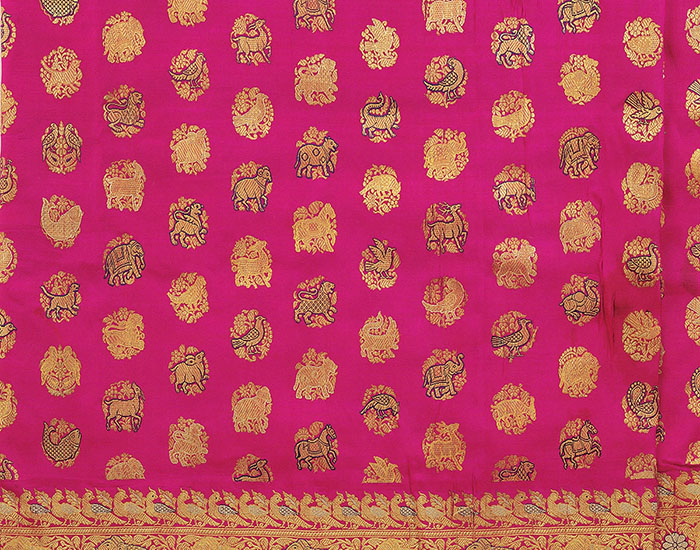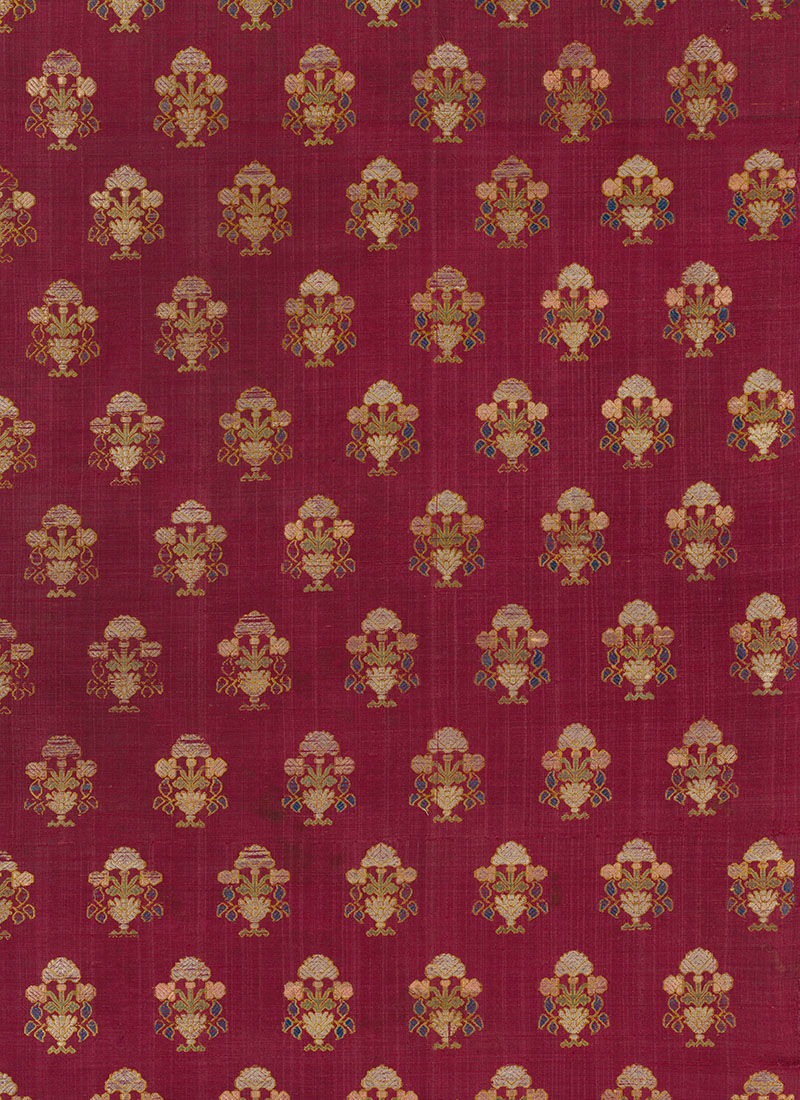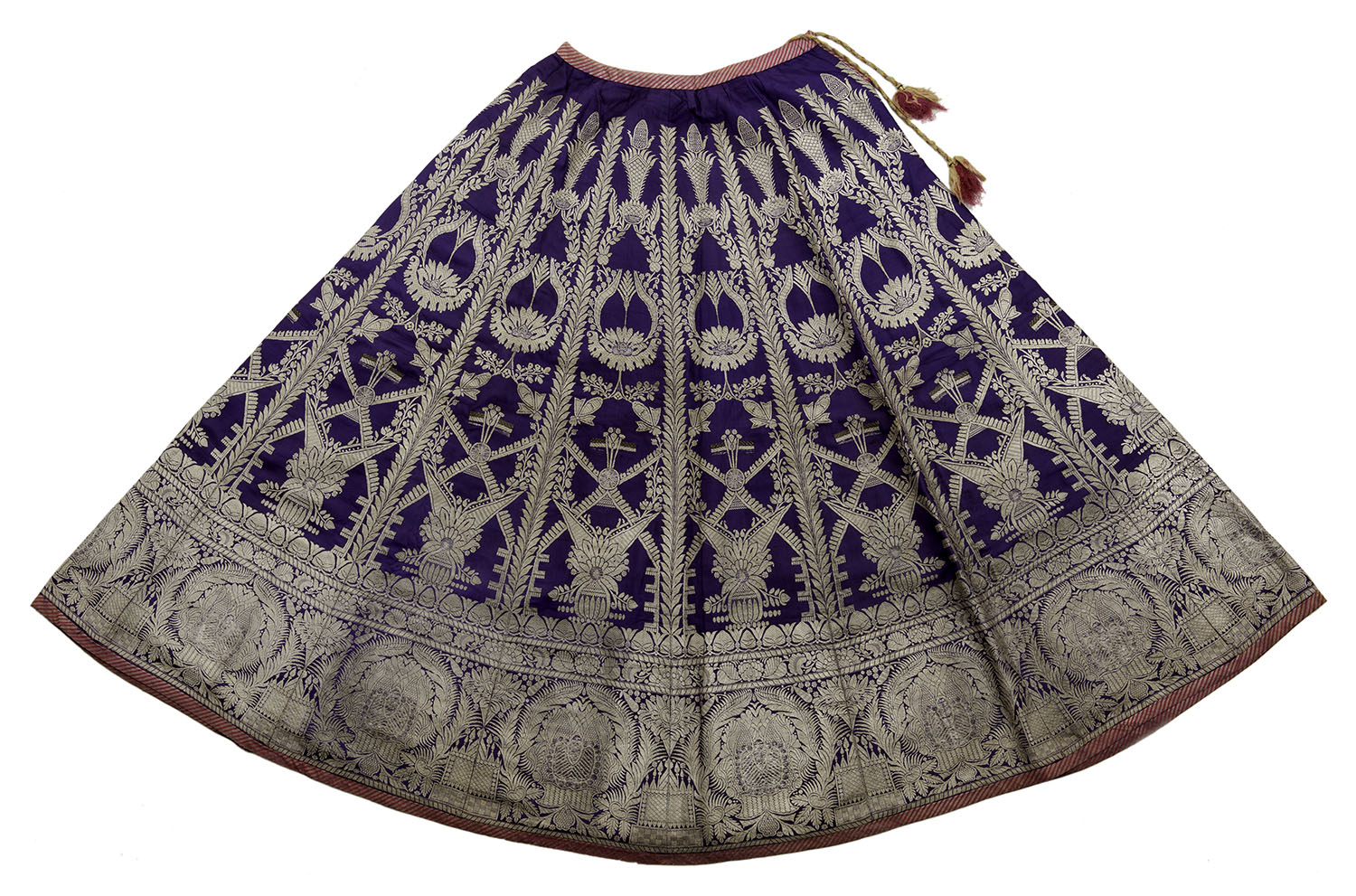
A shuttle-woven textile with elaborate patterns made with gold, silver or coloured threads on silk, cotton, muslin, satin or velvet. Brocades are intricately woven and have the appearance of an embroidered textile with textured designs of flowers, foliage and figural patterns. These are produced in the weaving process with the addition of a supplementary, non-structural weft in addition to the standard weft. Their name comes from the Italian word broccato, meaning “embossed cloth.”
Brocades are believed to have been originally produced in China, c. 260 BCE. However, there have been several references to a brocade-like fabric throughout Indian history, with the earliest textual reference found in the Rig Veda, which mentions Hiranya or “clothes made in gold”. Megasthenes, the Greek historian and explorer, has also given accounts of people who wore clothes made of gold decorated with floral designs. Similarly, Buddhist accounts refer to Kaśika vastra, or the cloth produced in Kashi (the ancient name for Varanasi), that was made in gold and silk and worn by the ruling class and nobility. The use of this Kaśika vastra continued till Gadhavala rule in 1193 CE, after which Indian brocades were revived only in the fourteenth century by weavers from Syrian and Uzbeki ateliers (or tiraz khanas), who introduced the extra weft practice to brocade weaving in Gujarat. Patronage from Mughal rule in the sixteenth century led to several design innovations as well as the introduction of zari (gold or silver threads) and kinkhwāb. Under the Mughals, gold and silver brocades began to be manufactured and traded on a large scale.
Brocades are produced on a drawloom or a jacquard loom by a supplementary weft technique, where pattern wefts are inserted between the ground wefts and bound by ground warp. In a drawloom, the brocade design is woven with the attachment of a structure harness is used to produce the ground weave, and pattern harness or jala suspended from an overhead beam on the loom and creates the pattern. Weavers also work with jacquard attachments on treadle looms with localised adaptations to achieve similar results to those of a traditional drawloom and jacquard loom.
Brocades remain objects of luxury, and today, it is most extensively used on sarees. Major brocade manufacturing centres in India include Ahmedabad, Surat, Paithan, Aurangabad, Raichur, Murshidabad, Varanasi, New Delhi, Lucknow, Thanjavur, Tiruchirapalli and Chennai. Though a popular textile, the handloom brocade industry faces stiff competition from power loom-produced fabric. The increasing costs of raw materials like silk has also made it difficult for weavers to continue working on this craft.
First Published: April 21, 2022
Last Updated: July 26, 2023



